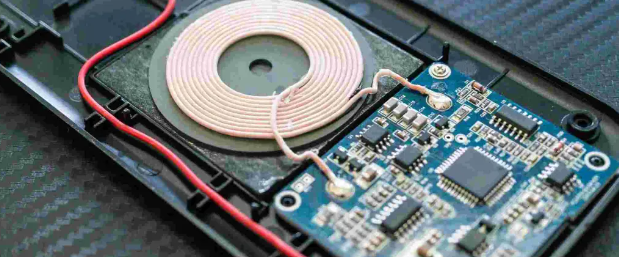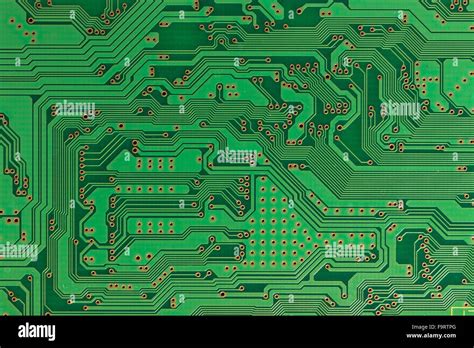General principles of PCB design
Printed circuit boards (PCBs) are the support for circuit components and devices in electronic products. They provide electrical connections between circuit components and devices. With the rapid development of electronic technology, the density of PCBs is getting higher and higher. The quality of PCB design has a great impact on the anti-interference ability. Therefore, when designing PCBs, the general principles of PCB design must be followed and the requirements of anti-interference design must be met. To achieve the best performance of electronic circuits, the layout of components and the layout of wires are very important. In order to design a high-quality and low-cost PCB, the following general principles should be followed:
1.Layout
First, consider the size of the PCB. When the PCB size is too large, the printed lines are long, the impedance increases, the anti-noise ability decreases, and the cost increases; if it is too small, the heat dissipation is not good, and the adjacent lines are susceptible to interference. After determining the PCB size, determine the location of special components. Finally, layout all components of the circuit according to the functional units of the circuit.
2.Shorten the connection between high-frequency components as much as possible, and try to reduce their distributed parameters and mutual electromagnetic interference. Components susceptible to interference should not be placed too close to each other, and input and output components should be kept as far away as possible.
3.There may be a high potential difference between some components or wires, and the distance between them should be increased to prevent discharge from causing accidental short circuits. Components with high voltage should be placed as far as possible in places that are not easily touched by hands during debugging.
4.Components weighing more than 15g should be fixed with brackets and then welded. Those large and heavy components with high heat generation should not be installed on the printed circuit board, but should be installed on the chassis bottom plate of the whole machine, and heat dissipation should be considered. Thermistors should be kept away from heating components.
5.For the layout of adjustable components such as potentiometers, adjustable inductors, variable capacitors, and micro switches, the structural requirements of the whole machine should be considered. If it is adjusted inside the machine, it should be placed in a place on the printed circuit board that is convenient for adjustment; if it is adjusted outside the machine, its position should be adapted to the position of the adjustment knob on the chassis panel.
6.The position occupied by the printed circuit board positioning holes and the fixing brackets should be reserved.

When laying out all the components of the circuit according to the functional units of the circuit, the following principles should be followed:
① Arrange the positions of each functional circuit unit according to the flow of the circuit, so that the layout is convenient for signal flow and the signal is kept in the same direction as much as possible.
② Take the core component of each functional circuit as the center and lay it out around it. The components should be arranged evenly, neatly and compactly on the PCB. Try to reduce and shorten the leads and connections between the components.
③ For circuits working at high frequencies, the distribution parameters between components should be considered. In general, the components should be arranged in parallel as much as possible in the circuit. In this way, it is not only beautiful, but also easy to assemble and solder. It is easy to mass produce.
④ The components located at the edge of the circuit board are generally not less than 2mm away from the edge of the circuit board. The best shape of the circuit board is a rectangle. The aspect ratio is 3:2 to 4:3. When the surface size of the circuit board is greater than 200x150mm, the mechanical strength of the circuit board should be considered.
2.Wiring
The wiring principles are as follows:
① The wires used for input and output terminals should be avoided as much as possible to be adjacent and parallel. It is best to add a ground wire between the wires to avoid feedback coupling.
②The minimum width of the printed conductor is mainly determined by the adhesion strength between the wire and the insulating substrate and the current value flowing through them. When the copper foil thickness is 0.05mm and the width is 1~1.5mm, the temperature will not be higher than 3℃ when a current of 2A passes through. Therefore, a wire width of 1.5mm can meet the requirements.
For integrated circuits, especially digital circuits, a wire width of 0.02~0.3mm is usually selected. Of course, as long as it is allowed, wide wires should be used as much as possible, especially power lines and ground wires. The minimum spacing of the wires is mainly determined by the insulation resistance and breakdown voltage between the wires in the worst case. For integrated circuits, especially digital circuits, as long as the process allows, the spacing can be as small as 5~8mm.
④ Pay attention to the following issues when wiring printed circuit boards: Dedicated zero-volt lines, the width of the power line is ≥1mm; the power line and the ground line are as close as possible, and the power and ground on the entire printed board should be distributed in a “well” shape to balance the distribution line current; provide a zero-volt line for analog circuits; to reduce crosstalk between lines, the distance between printed lines can be increased if necessary, pay attention; insert some zero-volt lines as line isolation; the plug of the printed circuit should also arrange more zero-volt lines as line isolation; pay special attention to the size of the wire loop in the current flow; if possible, add R-C decoupling at the entrance of the control line (on the printed board) to eliminate possible interference factors in transmission; the line width on the printed arc should not change suddenly, and the wire should not suddenly turn corners (≥90 degrees).
⑤ Pads The pads should be larger than the lead diameter of the device. However, too large pads are prone to false soldering. The outer diameter D of the pad is generally not less than (d+1.2) mm, where d is the lead hole diameter. For high-density digital circuits, the minimum pad diameter can be (d+1.0) mm.
PCB and circuit anti-interference measures
The anti-interference design of printed circuit boards is closely related to specific circuits. Here we only explain several common measures for PCB anti-interference design.

3.Power line design
According to the current of the printed circuit board, try to increase the width of the power line to reduce the loop resistance. At the same time. Make the direction of the power line and the ground line consistent with the direction of data transmission, which helps to enhance the anti-noise ability.
4.Ground line design
The principles of ground line design are:
①Separate digital ground from analog ground. If there are both logic circuits and linear circuits on the circuit board, they should be separated as much as possible.
The ground of low-frequency circuits should be connected to the ground at a single point in parallel as much as possible. When the actual wiring is difficult, it can be connected in series and then connected in parallel.
Multi-point series grounding is suitable for high-frequency circuits. The ground line should be short and loose, and a large area of grid-shaped ground foil should be used around high-frequency components as much as possible.
②The ground line should be as thick as possible. If the grounding wire is a very thin line, the grounding potential changes with the change of current, which reduces the noise resistance performance. Therefore, the grounding wire should be thickened so that it can pass three times the allowable current on the printed circuit board. If possible, the grounding wire should be more than 2~3mm.
③ The grounding wire forms a closed loop.
For printed circuits composed only of digital circuits, the grounding circuit is mostly arranged in a closed loop to improve the noise resistance. 3. Decoupling capacitor configuration One of the common practices in PCB design is to configure appropriate decoupling capacitors at various key parts of the printed circuit board. The general configuration principle of decoupling capacitors is: 1. A 10~100uf electrolytic capacitor is connected across the power input terminal. If possible, it is better to connect more than 100uF. 2. In principle, each integrated circuit chip should be arranged with a 0.01pF ceramic capacitor. If the printed circuit board gap is not enough, a 1~10pF capacitor can be arranged for every 4~8 chips. 3. For weak noise resistance. Devices with large power supply changes when turned off, such as RAM and ROM memory devices, should be directly connected to the decoupling capacitor between the power line and the ground line of the chip.
4.The capacitor lead should not be too long, especially the high-frequency bypass capacitor should not have a lead.
In addition, the following two points should be noted:
A. When there are contactors, relays, buttons and other components in the printed circuit board, they will generate large spark discharges when operating them. The RC circuit shown in the figure must be used to absorb the discharge current. Generally, R takes 1~2K and C takes 2.2~47UF.
B. The input impedance of CMOS is very high and is easily inductive, so when using it, the unused end should be grounded or connected to the positive power supply.
⑦ Useful suggestions for using logic circuits: Do not use high-speed logic circuits if you can; add decoupling capacitors between the power supply and the ground; pay attention to waveform distortion in long-line transmission; use R-S trigger as a buffer between the button and the electronic circuit







